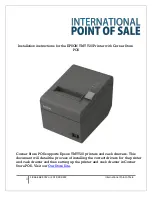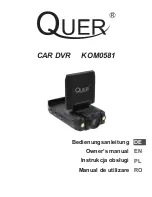
The secret to a good thermal image
16
Figure 16.2
Focused thermal image (left) with a maximum temperature of T
max
= 89.7°C (193.5°F) and an
unfocused thermal image (right) with a maximum temperature of T
max
= 73.7°C (164.7°F).
Of course, the size of the detector matrix also plays a role in image quality. Images taken
by cameras with small detectors (i.e., with fewer pixels) are more blurred or “grainier” and
give the impression that they are not focused (see Figure 16.3). It should also be noted
that not every camera can be focused, and in this case the only means of focusing the
camera is by changing the distance from the object.
Figure 16.3
The same radiator from the same distance with the same settings, taken by three different ther-
mal cameras: FLIR C2 (left), FLIR T440 (middle), and FLIR T640 (right).
16.4.2
Temperature range
For hand-held uncooled microbolometer cameras, the “exposure” is essentially preset by
the image frame rate. This means that it is not possible to choose for how long—and there-
fore how much—radiation hits the camera detector. For this reason, an appropriate tem-
perature range must be selected that matches the amount of incident radiation. If a
temperature range is selected that is too low, the image will be oversaturated, as objects
with higher temperatures emit more infrared radiation than colder objects. If you select a
temperature range that is too high, the thermal image will be “underexposed,” as can be
seen in Figure 16.4.
Figure 16.4
Images from a FLIR T440 with temperature ranges of –20 to +120°C, (left, –4 to +248°F), 0 to
+650°C (middle, +32 to +1202°F) and +250 to +1200°C (right, +482 to +2192°F). All other settings are
unchanged.
To take an image or temperature measurement, the lowest possible temperature range
available on the camera should be selected. However, it must also include the highest
temperature in the image (see Figure 16.5).
#T810252; r. AA/41997/41997; en-US
50
1.888.475.5235
info@FLIR-Direct.com
FLIR
-
DIRECT
.com
















































